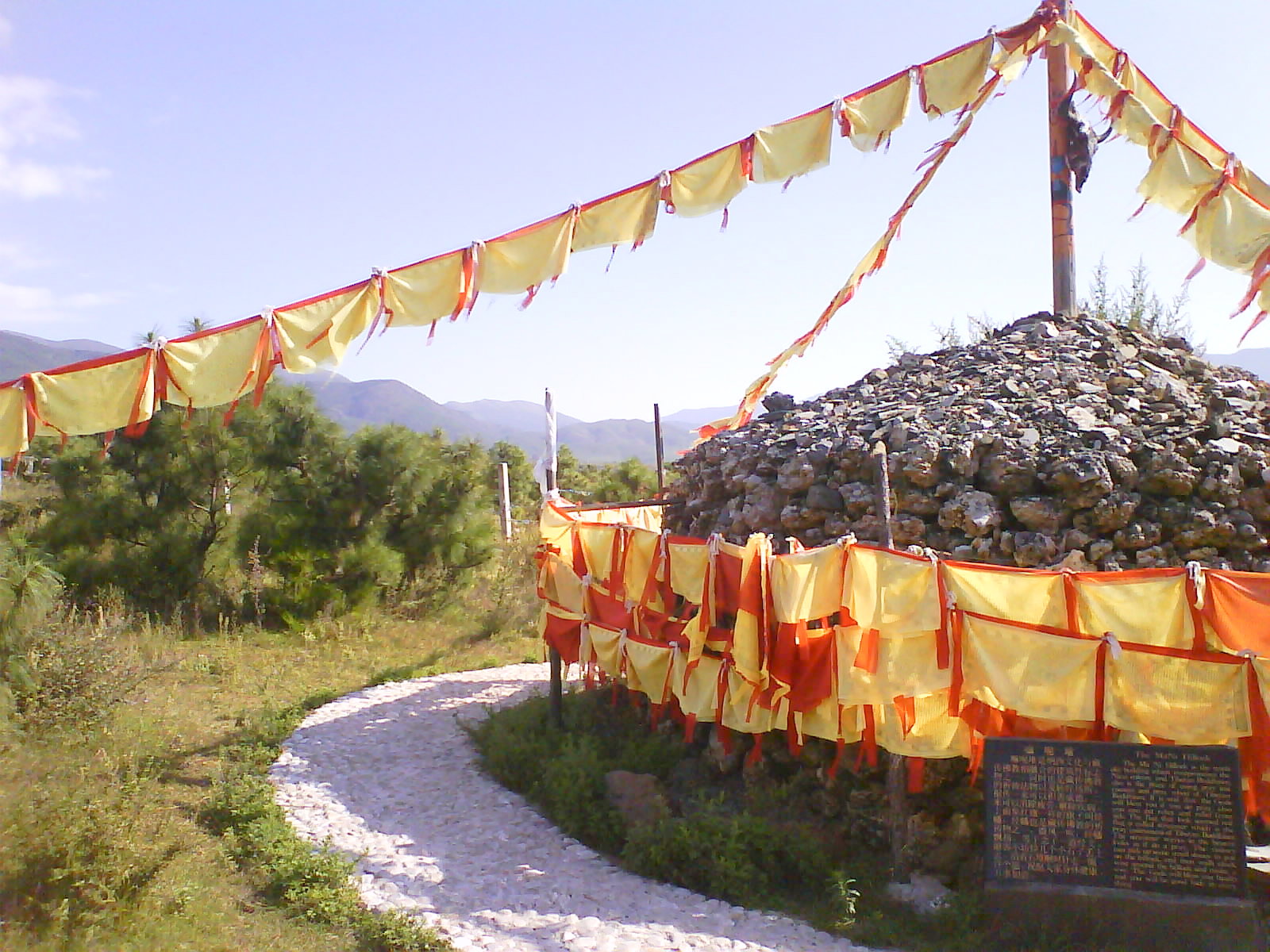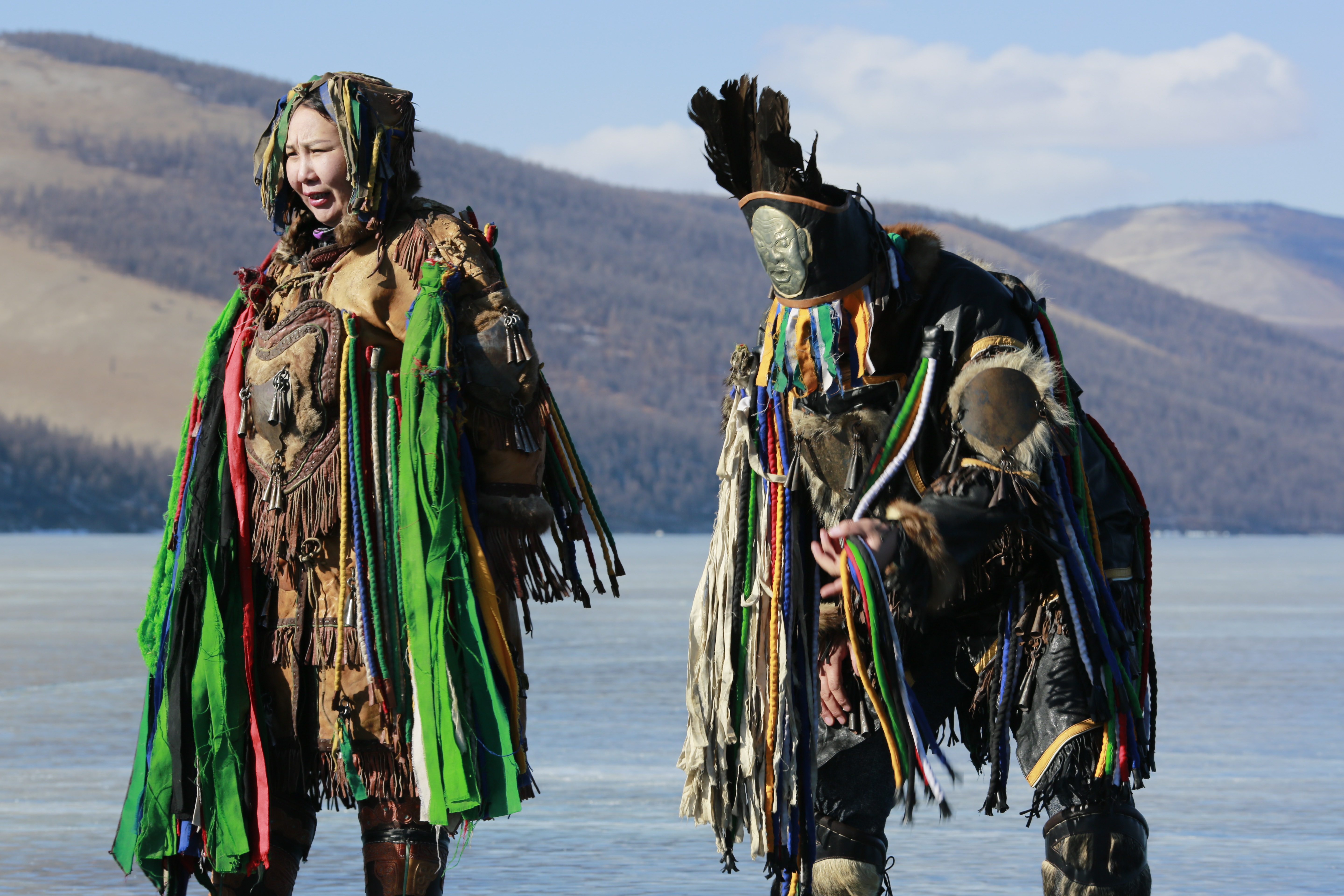|
Ovoo
Ovoo, oboo, or obo ( mn, овоо, bua, обоо, kjh, обаа, Traditional Mongol: , "heap"; Chinese: 敖包 ''áobāo'', lit. "magnificent bundle .e. shrine) are sacred stone heaps used as altars or shrines in Mongolian folk religious practice and in the religion of other Mongolic peoples. They are usually made from rocks with wood. Ovoos are often found at the top of mountains and in high places, like mountain passes. In modern times, some of them have developed into large and elaborate structures, becoming more like temples than simple altars. They serve mainly as sites for the worship of Heaven and lesser gods led by shamans and kins' elders, but also for Buddhist ceremonies. In custom When travelling, it is the custom to stop and circle an ovoo three times, moving clockwise, in order to have a safer journey. Usually, rocks are picked up from the ground and added to the pile. Also, one may leave offerings in the form of sweets, money, milk, or vodka. If one is in a ... [...More Info...] [...Related Items...] OR: [Wikipedia] [Google] [Baidu] |
Aobao In Hohhot, Inner Mongolia
Ovoo, oboo, or obo ( mn, овоо, bua, обоо, kjh, обаа, Traditional Mongol: , "heap"; Chinese: 敖包 ''áobāo'', lit. "magnificent bundle .e. shrine) are sacred stone heaps used as altars or shrines in Mongolian folk religious practice and in the religion of other Mongolic peoples. They are usually made from rocks with wood. Ovoos are often found at the top of mountains and in high places, like mountain passes. In modern times, some of them have developed into large and elaborate structures, becoming more like temples than simple altars. They serve mainly as sites for the worship of Heaven and lesser gods led by shamans and kins' elders, but also for Buddhist ceremonies. In custom When travelling, it is the custom to stop and circle an ovoo three times, moving clockwise, in order to have a safer journey. Usually, rocks are picked up from the ground and added to the pile. Also, one may leave offerings in the form of sweets, money, milk, or vodka. If one is in a ... [...More Info...] [...Related Items...] OR: [Wikipedia] [Google] [Baidu] |
Mongolian Culture
The culture of Mongolia has been shaped by the country's nomadic tradition and its position at the crossroads of various empires and civilizations. Mongolian culture is influenced by the cultures of the Mongolic, Turkic, and East Asian peoples, as well as by the country's geography and its history of political and economic interactions with other nations. One of the most distinctive aspects of Mongolian culture is its nomadic pastoral economy, which has shaped the traditional way of life for the Mongols for centuries. The nomadic lifestyle is centered around the family and the community, and involves the herding of animals such as sheep, goats, and yaks. This way of life has had a significant impact on Mongolian culture, influencing everything from the country's social relationships and family structures, to its art, music, and literature. Mongolian culture is also well known for its traditional arts, which include music, dance, and literature. The country's music and dance ... [...More Info...] [...Related Items...] OR: [Wikipedia] [Google] [Baidu] |
Religion In Mongolia
Religion in Mongolia has been traditionally dominated by the schools of Mongolian Buddhism and by Mongolian shamanism, the ethnic religion of the Mongols. Historically, through their Mongol Empire the Mongols were exposed to the influences of Christianity (Nestorianism and Catholicism) and Islam, although these religions never came to dominate. During the communist period of the Mongolian People's Republic (1924–1992) all religions were suppressed, but with the transition to the parliamentary republic in the 1990s there has been a general revival of faiths. According to the national census of 2020, 51.7% of the Mongolians identify as Buddhists, 40.6% as non-religious, 3.2% as Muslims (predominantly of Kazakh ethnicity), 2.5% as followers of the Mongol shamanic tradition, 1.3% as Christians, and 0.7% as followers of other religions. Demographics Main religions Buddhism Buddhism in Mongolia began with the Yuan dynasty (1271-1368) emperors' conversion to Tibetan Buddhism. The ... [...More Info...] [...Related Items...] OR: [Wikipedia] [Google] [Baidu] |
Bayan-Ovoo, Ömnögovi
Bayan-Ovoo ( mn, Баян-Овоо, Rich ovoo) is a sum (district) of Ömnögovi Province in the Gobi Desert of southern Mongolia. The seat lies at Erdenetsogt. History The sum was established on May 26, 1924. Geography and climate The sum is located in the Gobi Desert of southern Mongolia, by road southwest of the provincial capital of Dalanzadgad, Google, Retrieved 4 June 2020. at an elevation ranging from 2200 to 2700 metres above sea level. It borders China to the south and the sums of Nomgon< ... [...More Info...] [...Related Items...] OR: [Wikipedia] [Google] [Baidu] |
Mongolian Shamanism
Mongolian shamanism ( mn, Бөө мөргөл — ''Böö mörgöl''), more broadly called the Mongolian folk religion, or occasionally Tengerism, refers to the animistic and shamanic ethnic religion that has been practiced in Mongolia and its surrounding areas (including Buryatia and Inner Mongolia) at least since the age of recorded history. In the earliest known stages it was intricately tied to all other aspects of social life and to the tribal organization of Mongolian society. Along the way, it has become influenced by and mingled with Buddhism. During the socialist years of the twentieth century, it was heavily repressed, but has since made a comeback. Yellow shamanism defines a distinct form of shamanism practiced in Mongolia and Siberia. The term "yellow" in "Yellow Shamanism" is derived from "Yellow Buddhist"; more commonly known as Tibetan Buddhism, this style of Shamanism integrated elements of ritual practice and traditional Buddhist customs. The Gelukpa (or ... [...More Info...] [...Related Items...] OR: [Wikipedia] [Google] [Baidu] |
Mongolian Folk Religious
Mongolian shamanism ( mn, Бөө мөргөл — ''Böö mörgöl''), more broadly called the Mongolian folk religion, or occasionally Tengerism, refers to the animistic and shamanic ethnic religion that has been practiced in Mongolia and its surrounding areas (including Buryatia and Inner Mongolia) at least since the age of recorded history. In the earliest known stages it was intricately tied to all other aspects of social life and to the tribal organization of Mongolian society. Along the way, it has become influenced by and mingled with Buddhism. During the socialist years of the twentieth century, it was heavily repressed, but has since made a comeback. Yellow shamanism defines a distinct form of shamanism practiced in Mongolia and Siberia. The term "yellow" in "Yellow Shamanism" is derived from "Yellow Buddhist"; more commonly known as Tibetan Buddhism, this style of Shamanism integrated elements of ritual practice and traditional Buddhist customs. The Gelukpa (or Geluk ... [...More Info...] [...Related Items...] OR: [Wikipedia] [Google] [Baidu] |
Siberian Shamanism
A large minority of people in North Asia, particularly in Siberia, follow the religio-cultural practices of shamanism. Some researchers regard Siberia as the heartland of shamanism.Hoppál 2005:13 The people of Siberia comprise a variety of ethnic groups, many of whom continue to observe shamanistic practices in modern times. Many classical ethnographers recorded the sources of the idea of "shamanism" among Siberian peoples.Hoppál 2005: 15 Terminology in Siberian languages *'shaman': ''saman'' (Nedigal, Nanay, Ulcha, Orok), ''sama'' (Manchu). The variant /šaman/ (i.e., pronounced "shaman") is Evenk (whence it was borrowed into Russian). *'shaman': (Yukagir) *'shaman': (Tatar, Shor, Oyrat), (Tuva, Tofalar) *The Buryat word for shaman is ''бөө'' (''böö'') , from early Mongolian ''böge''. *'shaman': ńajt (Khanty, Mansi), from Proto-Uralic (c.f. Sámi ) *'shamaness': (Mongol), (Yakut), (Buryat), (Evenki, Lamut), (Nedigal). Related forms found in various Siberia ... [...More Info...] [...Related Items...] OR: [Wikipedia] [Google] [Baidu] |
Khadag
A ''khata'' or ''khatag'', ''dhar'', Mongolian: mn, хадаг, label=none, , or ; ne, खतक ; . is a traditional ceremonial scarf in Tibetan Buddhism and in tengerism. It originated in Tibetan culture and is common in cultures and countries where Tibetan Buddhism is practiced or has strong influence. History Tibetan people used to give animal skins as gifts because there was no silk in Tibet. According to the Bon historical record, people would put sheep wool around their necks during the time of the ninth king, Degong Jayshi, and head for some religious rituals. This tradition was passed down from that moment onwards. People began making scarves and using silk over time. So, the scarf replaced the plain sheep’s wool and people put scarves on the neck and head. Uses and types The khata symbolizes purity and compassion and is worn or presented with incense at many ceremonial occasions, including births, weddings, funerals, graduations and the arrival or departure ... [...More Info...] [...Related Items...] OR: [Wikipedia] [Google] [Baidu] |
Bayan Obo
Bayan'obo Mining District, ( Mongolian: ''Bayan Oboɣ-a Aɣurqai-yin toɣoriɣ'', Баян-Овоо Уурхайн тойрог ( mn, italic=yes, "rich" + ovoo); ), or Baiyun-Obo or Baiyun'ebo, is a mining town in the west of Inner Mongolia, People's Republic of China. It is under the administration of Baotou City, the downtown of which is more than to the south. The mines north of the town are the largest deposits of rare-earth elements yet found and, as of 2005, responsible for 45% of global rare-earth element production. In the satellite image at right, vegetation appears red, grassland is light brown, rocks are black, and water surfaces are green. Two circular open-pit mines are visible, as well as a number of tailings ponds and tailings piles. Economic geology China produced about 81,000 tons of rare-earth metals in 2001; the number jumped to about 120,000 by 2006. According to the Chinese Society of Rare Earths, of waste gas—containing dust concentrate, hydrofluor ... [...More Info...] [...Related Items...] OR: [Wikipedia] [Google] [Baidu] |
Tsagaan-Ovoo, Dornod
Tsagaan-Ovoo ( mn, Цагаан-Овоо, White ovoo) is a sum (district) of Dornod Province in eastern Mongolia Mongolia; Mongolian script: , , ; lit. "Mongol Nation" or "State of Mongolia" () is a landlocked country in East Asia, bordered by Russia to the north and China to the south. It covers an area of , with a population of just 3.3 million .... In 2009, its population was 3,696. References Districts of Dornod Province {{Mongolia-geo-stub ...[...More Info...] [...Related Items...] OR: [Wikipedia] [Google] [Baidu] |
Saikhan-Ovoo, Dundgovi
Saikhan-Ovoo ( mn, Сайхан-Овоо, Beautiful ovoo) is a sum (district) in central Mongolia. The sum center is on the single perennial river of Dundgovi Province, the Ongi gol. It is the tenth longest river in Mongolia with an overall length of 435 km. Onglin Khid Ongiin Khiid is a notable monastery on the Ongi river about 18 km from Saikhan Ovoo. Formerly one of the largest monasteries in Mongolia, it was founded in 1660 and consisted of two temples complexes on the North and South of the Ongi Gol river. The older southern complex consisted of various administrative buildings as well as 11 temples. The northern complex, built in the 18th century, consisted of 17 temples - among them one of the largest temples in all of Mongolia. The grounds housed also 4 Buddhist universities. It was completely destroyed in 1939 under Khorloogiin Choibalsan, the then president and leader of the Communist Party of Mongolia. Over 200 monks were killed, and many surviving monks wer ... [...More Info...] [...Related Items...] OR: [Wikipedia] [Google] [Baidu] |
Mandal-Ovoo, Ömnögovi
Mandal-Ovoo ( mn, Мандал-Овоо, Rising ovoo) is a sum (district) of Ömnögovi Province in southern Mongolia Mongolia; Mongolian script: , , ; lit. "Mongol Nation" or "State of Mongolia" () is a landlocked country in East Asia, bordered by Russia to the north and China to the south. It covers an area of , with a population of just 3.3 million .... In 2009, its population was 1,954.Ömnögovi Aimag Statistical Office References [...More Info...] [...Related Items...] OR: [Wikipedia] [Google] [Baidu] |


.jpg)



